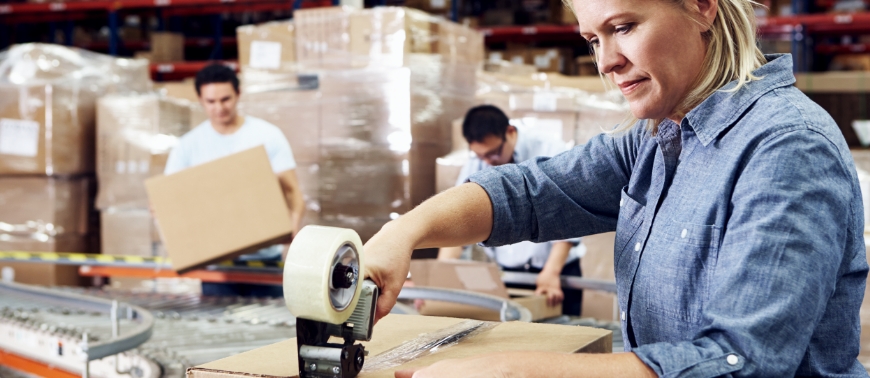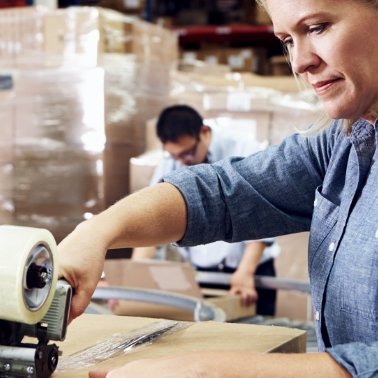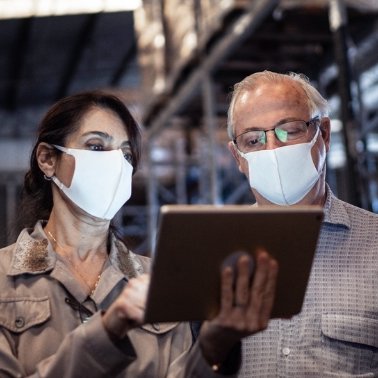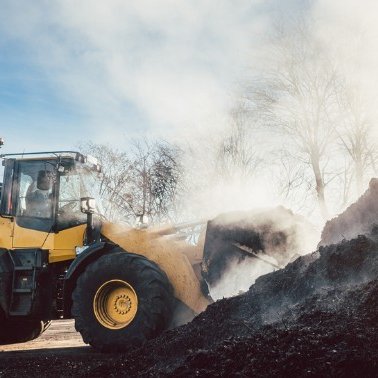It is protection, transport aid and recognition feature all in one: packaging fulfils many functions at once. This makes it even more important to choose exactly the right type of packaging for a product. In our blog article, we show what needs to be considered, what types and methods are available and what challenges are involved.
We look at product packaging from a logistical perspective: What are the differences between tertiary, secondary and primary packaging and what functions do they each have? In addition, we put a special focus on packaging types for temperature-sensitive and environmentally sensitive products.
Types of packaging in logistics
The packaging of a product consists of different packaging layers. According to EU Directive 94/62/EC, a distinction is made between sales packaging, outer packaging, and transport packaging.
Sales packaging, also called primary packaging, contains, stores, and protects the product. It directly encloses the article and has the purpose of keeping it in optimal condition. This packaging is the smallest unit of consumption: it is what allows the product to be sold by the piece. We know primary packaging in the form of cans, tubes, jars, bottles, or bags.
The second packaging layer is the secondary packaging, also called outer packaging. It wraps individual primary packages and bundles them together. Films, boxes, or cardboard packaging are used for this. An example: a tetra pack is primary packaging, the associated carton containing the 6-pack is secondary packaging.
There is also tertiary packaging, also called transport packaging. It combines primary and secondary packaging into a larger loading unit. Grid boxes, pallets, containers, and modular cartons are among the most common transport packaging.
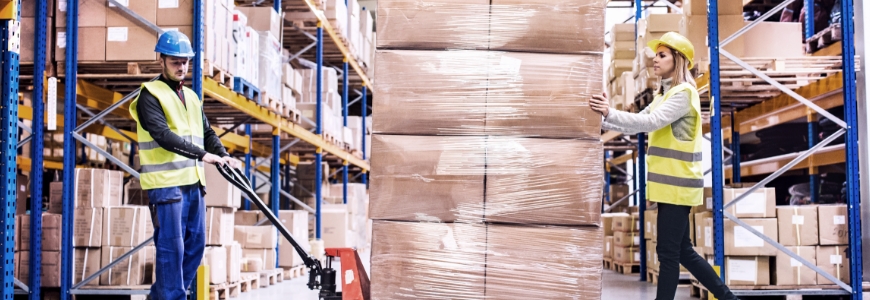
As numerous as the types of packaging are, there are also many materials from which they can be made: The most common packaging materials are cardboard, paper, plastics, glass, wood, and sheet metal. The former pioneer, plastic, is now in sharp decline, as more environmentally friendly alternatives are increasingly being sought.
Packaging selection: decisive factors
One thing is clear: with the right packaging, both direct costs such as material purchasing and waste management and indirect costs such as packaging processes, storage and loss through damage can be reduced. But what are the factors that determine the choice of packaging?
The first consideration for packaging is the property of the product: state of aggregation, weight and volume, fragility, deformability, shelf life and value determine which packaging makes sense. Sensitive products such as foodstuffs, pharmaceuticals, medicines, or hazardous goods place special quality demands on the packaging. The production and packaging process - automatic or manual - also has an influence on the choice of primary and secondary packaging.
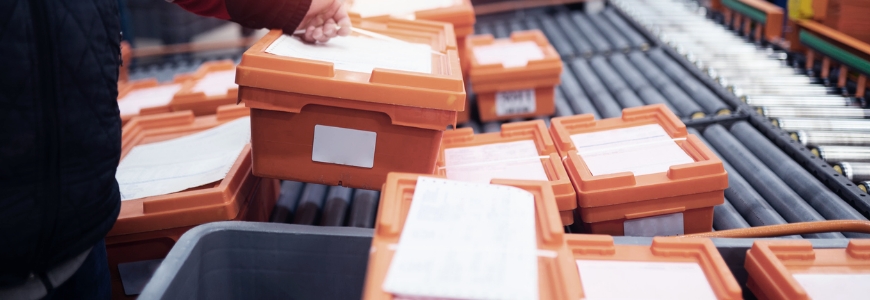
In addition, environmental impacts of packaging waste and the recycling possibilities or reuse of the packaging are an important issue. Several laws and regulations such as ISO standards or environmental laws also regulate the properties that packaging must fulfil.
Another essential factor - and challenge at the same time - is the handling of the goods during transport and storage. Here there are several aspects that must be taken into account. Can the product be stacked easily? How long can it be stored? Which transport methods are used and how often is loading and unloading carried out? And finally, what temperature and humidity is the product exposed to throughout the supply chain? All this must be considered.
Cold chain: logistical challenges and strategies
Special challenges arise when sensitive goods are transported. This is the case in food logistics, for example. These goods place special demands on transport duration, traceability, best-before dates, hygiene, product-appropriate storage and maintaining the cold chain. Let's take a closer look at the types of packaging in active and passive refrigeration.
Insulated packaging: active and passive cold chain
Ensuring that sensitive products survive the transport to the consumer unscathed is primarily a question of the optimum temperature. This is where insulating packaging comes into play. Whether for food, medical or chemical products: They ensure continuous compliance with the cold chain within the supply chain or value chain. There is a choice between passive and active cooling. With active cooling, the goods are continuously cooled, the temperature is controlled and recorded. Vehicles and storage rooms are equipped with special cooling technology for this purpose. Passive cooling, on the other hand, works with conventional insulated packaging. Temperature maintenance can be additionally supported by means of dry ice.
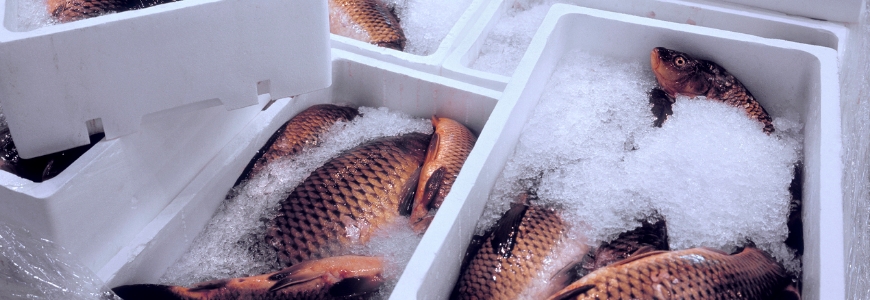
Isolation: mechanisms and challenges
A challenge in itself is the choice of the appropriate insulation technique. Depending on the product, transport duration, region and time of year, transports with passive cooling can only be carried out sporadically, seasonally or all year round. However, since actively cooled transports are associated with significantly higher costs, transport service providers often decide whether passive cooling makes sense depending on the day and the weather.
More and more products requiring refrigeration are rushing onto the market - and with them the number of insulated packages used is also increasing. Intelligent monitoring systems are increasingly being used to maintain the temperature. Sensors directly on the package tell the cold chain management whether legal regulations and values are being adhered to. In this way, the cooling temperature is constantly monitored to be able to react quickly in case of deviations.
Environmentally friendly insulating packaging
Common insulating packaging consists of or contains materials such as polystyrene. It goes without saying that this is not biodegradable and therefore not environmentally friendly. To change this, solutions are continuously being worked on to replace conventional methods. Hemp and straw are good examples of environmentally friendly insulating packaging: They are low energy in production and regionally available. Especially on the way to the end consumer - the last piece of the cold chain - they are increasingly used. A remarkable development, especially because in 2013 there was not yet a single environmentally friendly alternative to Styrofoam - and generally no plastic-free alternative to it - in the world.
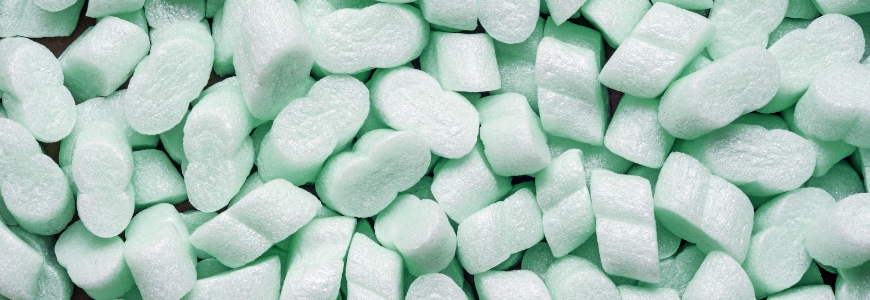
Every product needs individual packaging. However, there are several things to consider when choosing the optimal packaging. It is therefore advisable to evaluate different options - not only for cost, safety, and marketing reasons, but also in terms of sustainability.
A value chain without packaging is unthinkable. This makes it more important to act moderately here. To keep up with the times, environmentally friendly alternatives are needed. We think the progress is great and are looking forward to more!
